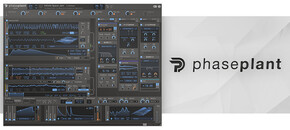The VOX Continental V is the last faithful reproduction of the classic sound of the famous Vox Continental 300 synthesizer. This organ was used for the recording of some of the most famous songs of bands of the 60 ‘, 70′, 80 ‘and beyond.
So, think about The Beatles and their famous Shea Stadium concert, specially the song I’m Down, when John Lennon plays a keyboard solo with his elbows (well, he actually destroys a keyboard with his elbows), ok, now, think about Ray Manzarek from The Doors, and songs like Light My Fire; what do they have in common? Well, nothing else than the brilliant sound of the Vox Continental transistor organ, which Arturia has managed to reproduce very faithfully with some cool extras. Lets check it out!
A little history.
Hammond B3s and C3s were the kings of organs and were chosen by most studios for their keyboard arsenal, still there was an issue with portability and price. Due to its tubes, they were massively heavy, expensive and fragile, so, some cheaper and lighter alternatives from Italy and UK begin to appear everywhere: the Farfisa compact and the Vox continental. Many Rock bands and keyboard player embraced their sound which is much more buzzier and harsher and somehow thinner, and so, the Vox Continental became one of the classics.
Overview.
Arturia’s Vox V has -as the original- two manuals (4 octaves each manual) and bass pedals (one octave), a volume pedal, built in spring reverb, vibrato, percussion settings and a set of drawbars for each manual and bass pedals. Each of the manuals and bass pedals play on a different MIDI Channel, by default upper manual plays on CH.1, lower manual on CH.2 and pedals on CH.3.
The drawbar sets work just a little bit different than the most well known Hammond organ, for the lower section, there are 4 harmonic drawbars (16’ 8’ 4’ IV), and for the upper manual, five (16’ 8’ 4’ II III), and then, something like two master outputs for each (pedal, lower upper), one labeled as sine, which produces a very rounded dark output, and one labeled as M -Reed-, which in turn produces a more nasal saw-ish sound. You can have a mix of both or just one, or you can get them all to 0 for muting the manual or pedal. Bass can be switched from the 8’ register to the 16’ for a deeper bass tone. Next, there’s a Reverb on/off switch and a vibrato on/off. Needless to say that vibrato sounds great!
Then, you’ll find to sliders for reverb and bass decay time, by the way, the latter can be really long. Speaking of bass pedals, it’s worth mentioning that this are monophonic with low note priority.
On top of this switches and sliders, are the keyboard modes, so, you can play in the regular fashion (each manual and pedal has its own midi channel all across the keyboard), split (lower octave for bass, then central octave for lower manual and higher octave for the upper manual), just bass (still gonna have only one octave), lower, and upper.
On the lower right corner are located the percussion switches with switches for 8’ and 4’ on/off, mix and short or long attack.
Like on the Wurlitzer V reviewed before, there are three ways for output signal: D.I.. Leslie amp, and guitar amp. All of this is pretty similar than what I’ve reviewed on the Wurly. The only remarkable difference I could found is that the guitar amp is modelled after a Vox amp instead of a fender, so, expect a more British sound, especially when cranking up the drive knob!
As well as with the Wurlitzer V, there’s a pedal board, with fewer fx and just one slot. The pedals you’ll find here are flanger, phaser, chorus, analog delay, overdrive and wah-wah, and yes, they are exactly the same models as on the Wurlitzer V.
Extras.
There are some very well thought extras, accessible via the EXT button and the OPEN button. In the EXT section, we’ve got more draw-bars for each manual (5 1/3’, 2 2/3’, 1 3/5’ and 1, plus a string -labeled S-). Also, there’s a tremolo circuit, and percussion switches for 2 2/3’ and 1’
A whole new world of options appear when you open the lid (OPEN), there you’ll find vibrato and tremolo depth and rate controls, you can select the reverb from various spring tanks (11, actually), you can select the engine (from the models manufactured in Jennings and the ones manufactured in Vox factories), and each sounds pretty different with some unique tonal colour. You can add some background noise and tweak the key contact age to make it sound more vintage (or damaged actually, which is nice).
Finally, as this is uses octave divide polyphony, you can fine tune each note for some detuning and ageing.
Other goodies.
As with all the V collection stuff I’ve been reviewing, MIDI implementation is awesome and easy as it could be. You can set individual MIDI channels, split points and individual octave shifts for each of the manuals and pedals, and you can choose your flavour between red lid model and grey lid model. Of course there are lots of presets available, and they all sound great.
Conclusions.
This sounds great, is easy to use and can sound as vintage as you want to. The Vox V has a special vibe for 60s music, from rock to latin, and it’s true to the original. I would definitely say that any keyboard player should have this in their virtual instruments arsenal, and any Ray Manzarek fan would have hours and hours of fun with this trying to imitate his settings (awesome way to learn sound design BTW).
Arturia Vox Continental V synth plugin is available at PluginBoutique.com for €102.30 or or you can get the entire V Collection 4 bundle that includes all 16 virtual vintage synths developed by Arturia: Wurlitzer V, Modular V, CS-80 V, ARP2600V, Jupiter 8-V, Prophet V & VS, Oberheim SEM V, Matrix-12 V, Solina V, Mini V2 and the Spark 2 drum machine.
Score - 9.5
The Vox Continental V will give you instant access to classic sound of the classic and rare Vox Continental 300 "dual manual organ". This is the best emulation software on the market!
Original Source: producerspot.com






